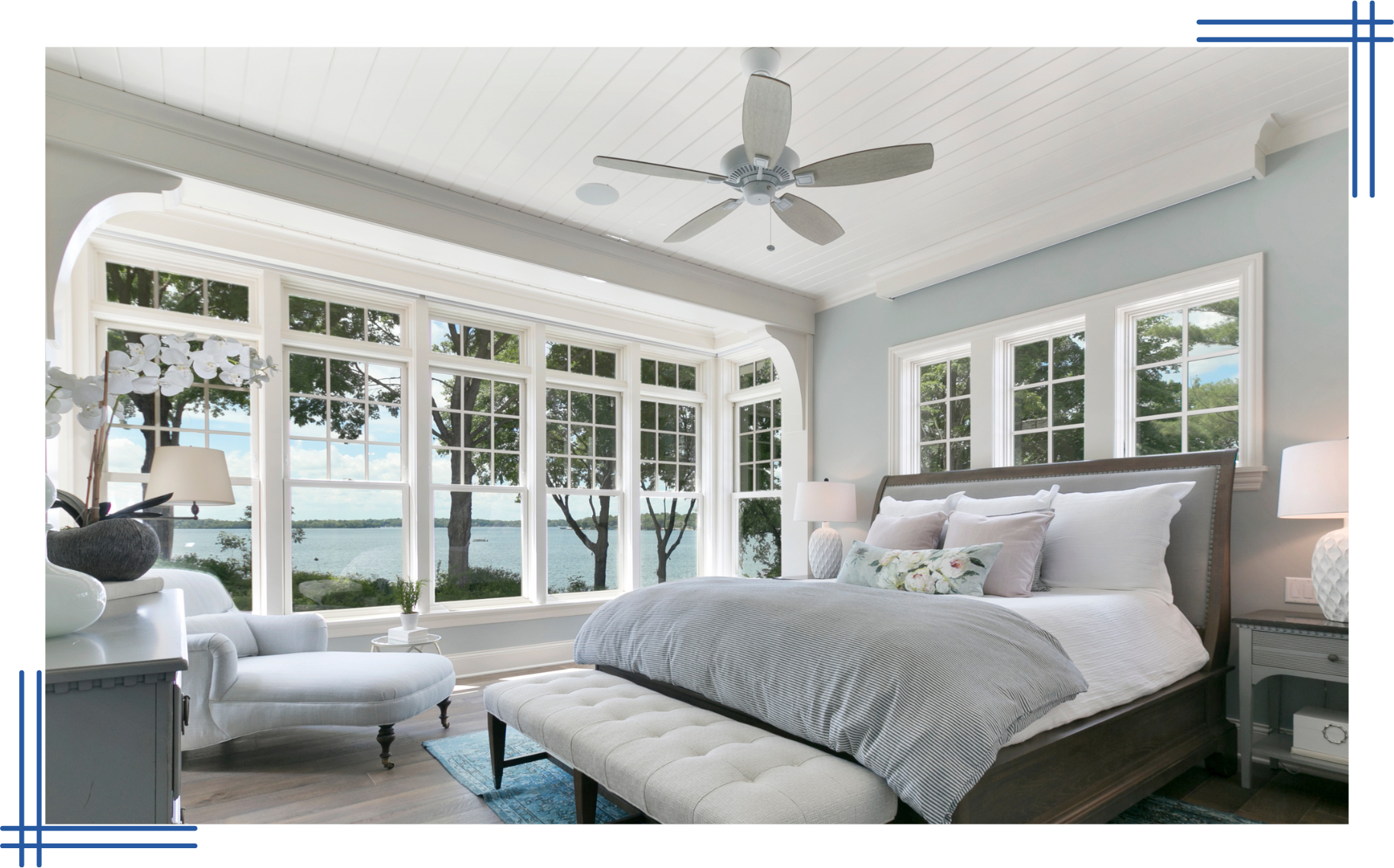
Slide title
Write your caption hereButton
Ceiling Fan Installation

Slide title
Write your caption hereButton
Ceiling Fan Installation
The origins of the rotary ceiling fan date back to the early 1860s in the United States, but it was the introduction in 1882 by Philip Diehl that marked the creation of the first motorized unit. Diehl, an engineer, adapted the motor from his electrically powered Singer sewing machines to power a ceiling-mounted fan. This innovation made the more accessible and practical for widespread use in residential and commercial settings.
Over the decades, the design and functionality have evolved significantly. They now come with a variety of features including remote controls, variable speeds, and reversible blades that allow them to be used for both cooling and helping distribute heat around a room during cooler months. The aesthetic appeal has also increased, with designs ranging from sleek and modern to ornate and traditional, fitting various decor styles and personal tastes.
Energy Efficiency And Cost Savings
One of the most significant benefits is their ability to enhance energy efficiency within a home or commercial space. By circulating air, they can make a room feel cooler in the summer by creating a draft, which allows thermostats to be set at a higher temperature without compromising comfort. This reduced dependency on air conditioning during warmer months can lead to substantial savings on energy bills. Summit Electrical Solutions emphasizes the installation of energy-efficient models that are designed to provide maximum airflow while minimizing electrical consumption, potentially reducing cooling costs by up to 40%. For instance, using them can allow for raising the thermostat setting about 4°F with no reduction in comfort during the summer, according to the U.S. Department Of Energy. An interesting record is held by the "Big Ass Fan," a brand known for producing the largest available on the market. They can span up to 24 feet (7.3 meters) in diameter and are used in large spaces such as warehouses, sports arenas, and commercial hangars where extensive air movement is required.
Complexities Of Installation
Installation involves much more than just attaching the fan to the ceiling. The process includes several critical steps that, if not performed correctly, could compromise both functionality and safety. For instance, the electrical wiring aspect is particularly delicate. They must be integrated into the home's existing electrical system. This task requires a thorough understanding of wiring and electrical loads to prevent overloading circuits, which could lead to electrical fires.
Furthermore, the physical installation demands precision. The fan needs to be securely mounted to ensure it does not become loose over time, which could pose serious safety risks, such as falling on someone. Additionally, the blades need to be perfectly balanced to prevent wobbling, which can lead to wear and tear on the motor and create annoying noise.
- Special Considerations For Unique Home Designs: Homes with high or vaulted ceilings require special attention during installation. Summit Electrical Solutions provides specialized equipment and expertise to handle installations at height, ensuring that the fan is securely mounted and that it operates effectively, pushing air down into the living spaces where it is needed most.
- Tailoring Solutions to Commercial Spaces: Commercial buildings often feature larger open spaces or segmented areas with high ceilings, which necessitates a different strategy for effective air circulation. The layout and size of each space is considered to determine the optimal number and types required. For large warehouses or manufacturing facilities, industrial ceiling fans that can move large volumes of air efficiently are often recommended. In contrast, for office spaces or retail locations, aesthetics and noise levels become more significant considerations alongside efficiency. The primary goal in commercial installations is to enhance the comfort of both employees and customers, which in turn can contribute to increased productivity and a better shopping experience. Proper installation helps in maintaining a pleasant and even temperature throughout the space, reducing the reliance on air conditioning and thereby lowering energy costs. Fans are strategically placed to avoid drafts while providing adequate air movement in occupied areas.
- Addressing Challenges In Outdoor Installations: One of the primary concerns with outdoor ceiling fans is their ability to withstand various weather conditions, such as rain, humidity, and extreme temperatures. Summit Electrical Solutions offers fans that are specifically designed for outdoor use, featuring weather-resistant materials and finishes that prevent rust and degradation. They are positioned strategically to optimize air circulation, taking into account prevailing winds and the layout of the outdoor space. This includes considerations for speed and blade design, which can be crucial for maintaining comfort in open areas where air movement is less predictable. Reinforced mounting systems and vibration-resistant fixtures are used to ensure that the fans remain stable and operational under almost all conditions.
Ready to enhance the comfort and efficiency of your home or business with expert ceiling fan installation? Summit Electrical Solutions is here to provide top-notch service tailored to your specific needs. Our certified professionals are equipped to handle any project, ensuring optimal performance and safety. Don't wait to improve your indoor air quality and reduce your energy costs.
Contact us today to schedule a consultation and discover how our dedicated team can make a difference in your space. Experience unparalleled service and peace of mind with every installation.
Frequently Asked Ceiling Fan Questions
Q1: Are there models that can change direction automatically based on temperature?
A1: Yes, some advanced models are equipped with sensors and automatic controls that can change the direction of the fan based on the room temperature. These are designed to rotate counterclockwise in the summer to push cool air down, and clockwise in the winter to pull cool air up and push warm air down, optimizing air distribution for comfort without manual intervention.
Q2: Can they be effective in rooms with very high ceilings, like those in warehouses or churches?
A2: They can be effective in rooms with high ceilings, but the effectiveness largely depends on the type and size. Large industrial ceiling fans, often called HVLS (High Volume Low Speed) fans, are specifically designed to move large volumes of air efficiently in such spaces. These have much longer blades and operate at a slower speed to circulate air effectively throughout large and high-ceilinged areas.
Q3: How do dual motor ceiling fans work and what are their benefits?
A3: Dual motor ceiling fans have two adjustable fan heads, each driven by its own motor, mounted on a single body. This design allows for greater flexibility in air circulation because the angles can be adjusted independently to direct airflow more precisely around the room. The dual motor configuration is especially beneficial in larger or irregularly shaped rooms where one fan might not provide adequate airflow to all areas.
All Rights Reserved | Summit Electrical Solutions
